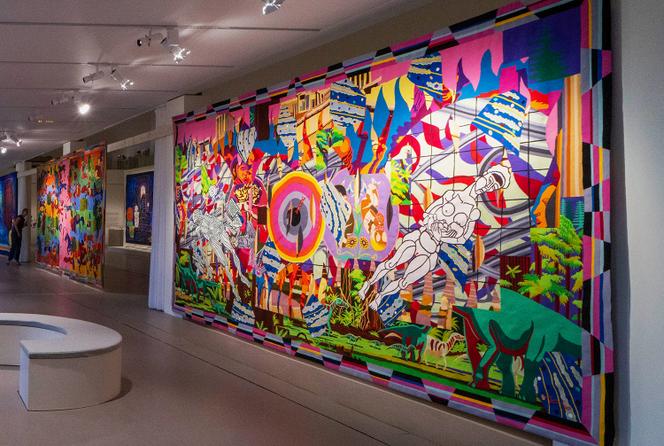


Many know Gustave Courbet's 1866 painting L'Origine du monde (The Origin of the World). The Danish artist Bjørn Nørgaard, born in 1947, drew inspiration from it to create L'Origine du futur ("The Origin of the Future"): a six-meter by three-meter tapestry made by the Manufacture des Gobelins in Paris. It is on display until August 17 in a newly renovated gallery of the Grand Palais, before it travels to Koldinghus Castle in Denmark's Jutland region.
Built from fragments, Nørgaard's work traces the history of the world, from prehistory to the era of the Greek city-states and the Enlightenment. At the center is a black hole. On one side, catastrophe is depicted through the enormous mushroom cloud of the H-bomb. On the other, life appears, represented by two children within a crown of flowers. The naked bodies of a man and a woman float as if in weightlessness – one connected to technology, which has both transformed humanity and could lead to its downfall, the other leaning over a newborn.
Striking in its detail, the tapestry is part of a series of 16 commissioned by the New Carlsberg Foundation from the Mobilier National, France's national furniture collections and workshops. When the Danish patron established the foundation in 1902, he wanted to celebrate the 750th anniversary of Koldinghus Castle, whose walls will be adorned with the tapestries beginning in 2028. Until then, all but one – the last still in progress – are on view at the Grand Palais in Paris. This commission calls to mind another.
You have 61.65% of this article left to read. The rest is for subscribers only.
